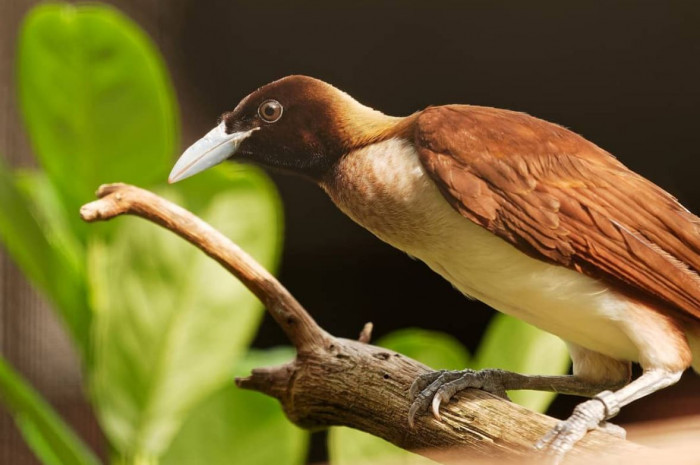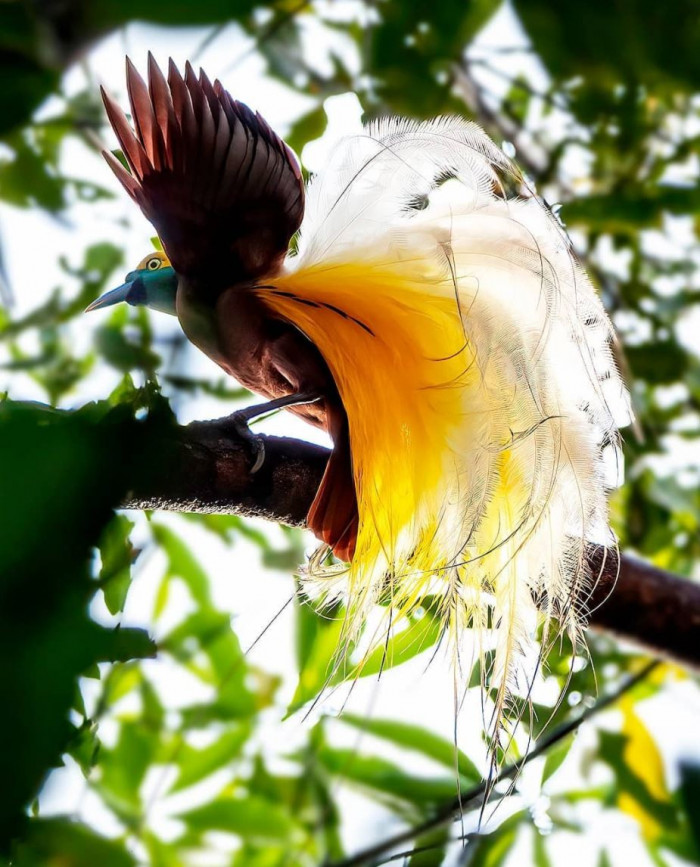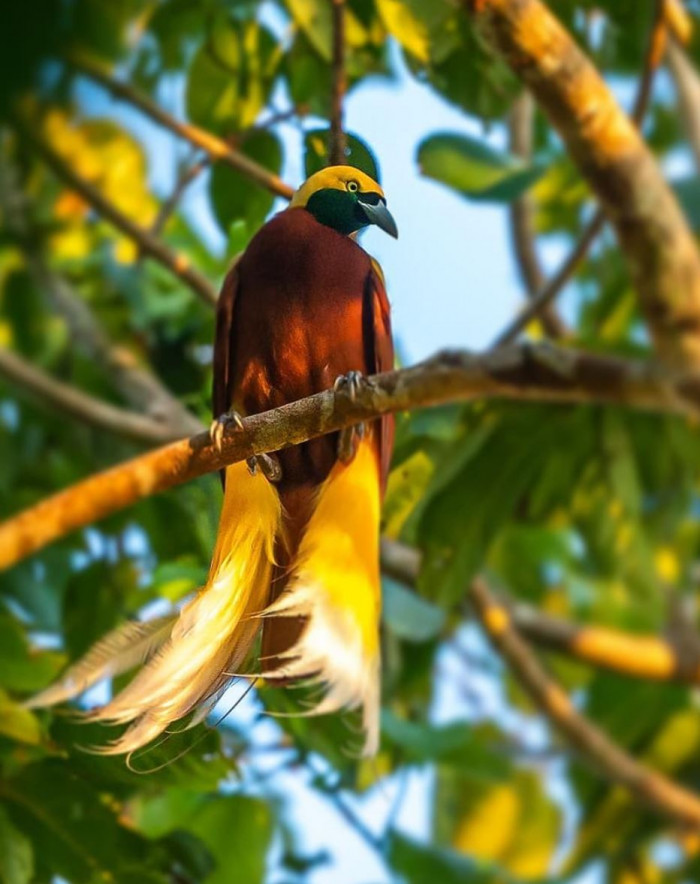Have you ever seen a small bird of paradise? I’m not sure why the word “smaller” is written here because once you look at it you will fall in love and be mesmerized by its beauty!
Scientifically known as lesser Paradisaea, these 32cm long birds are primarily found in Papua New Guinea, Misoula, and Yapen. Male birds have dark maroon feathers, a bright yellow crown, a frosty blue bill, and a yellowish-brown upper back.
Their throat is a stunning emerald green color and, adding to their beauty, a pair of long tail wires and elongated side feathers complete their appearance. Females have pearly burgundy feathers, a brown head, and a pearly white belly.
Young birds, regardless of gender, look more like females than males. Lesser birds of paradise prefer to remain in tropical and swamp forests due to the humidity and abundant food.
Although they are adaptable and adaptable to different conditions, they prefer to be found at an altitude of 1550 meters. Their diet mainly consists of fruits and arthropods.
As for breeding, the season begins in July and ends in February. The male bird courts the female, showing off his best appearance, and if the female is impressed, she begins to build a strong nest from sticks, branches, fallen leaves, and vines.
The nest is placed at a height of six meters from the ground and is attached to the tree using plant fibers and roots. The female then lays 1-2 eggs, incubates them for about 20 days, and cares for the young after they hatch.
Females are known to lay up to 12 eggs and, being a one-man army, she alone cares for her offspring. Here are more facts about this stunning little bird of paradise!
Males are polygamous and court females in leks!
A single lek can have up to 12 adult males or a combination of juveniles and adults, all with a single aim of impressing the female. Older males occupy the center of lek.

They’re mostly hunted by snakes, owls, and hawks.

Although their population is declining, they’re not endangered. According to experts, they’re not globally threatened.

They’re solitary birds who come together only during mating.

The average lifespan of these birds is five to eight years.

Juvenile nestlings leave the nest about 20 days after hatching.

Although these birds are tolerant, their temperament can change if their territory is invaded.

They use a series of high-pitch “wak” sounds to communicate with each other. Their long notes include “wik-wong-wau-wau”.

Listen to the majesty of the lesser bird of paradise below:
Although they are not poisonous, these birds prefer to be left alone. They are not dangerous as long as they are not threatened.
These birds survive best in the wild and in some zoos where special conditions are provided to suit their living conditions and preferences, so they are not pets and should not be kept in cages at home.
However, this bird should by no means be considered lesser than its counterpart, the great bird of paradise!
H/T:pupperish
Read More: Strange-looking deer rescued after days without food or water





